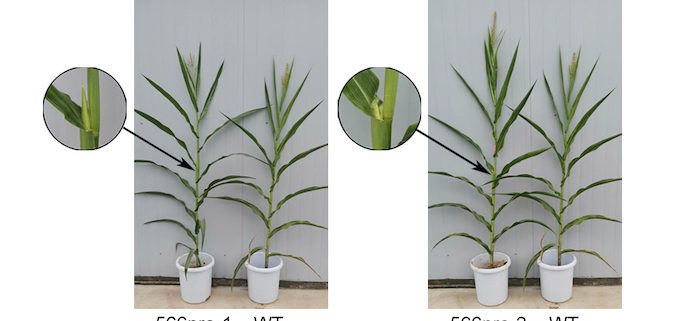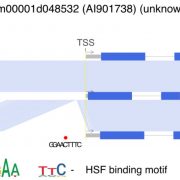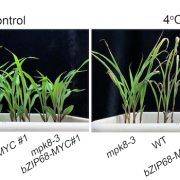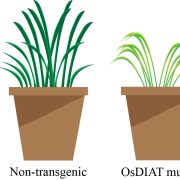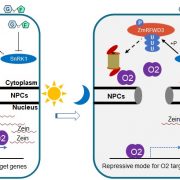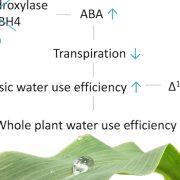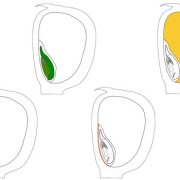How drought affects the asynchrony between anthesis and silking
By Boxin Liu and Feng Qin
Institute of Botany, Chinese Academy of Sciences, College of Biological Sciences, China Agricultural University
Background: Maize is the only monoecious plant among the major cereal crops. Maize develops male and female inflorescences at different positions of the plant. The male inflorescence (tassel) is located at the top, while the female inflorescence (ear) grows in the middle of a plant. Anthesis occurs when pollen is released from the tassel. Usually at the same time, pistils with long stigmas (silks) protrude from the ear bracts for pollination, a process referred to as silking. When a drought episode occurs during flowering, however, it leads to a significantly prolonged interval of anthesis and silking (ASI). Such an extension hampers successful pollination and greatly reduces yields.
Question: We wanted to know the molecular mechanism underlying why drought induces a prolonged ASI in maize. Is it possible to relieve this problem through genetic engineering?
Findings: Microscopic observation showed that drought stress had little effect on the development of tassels but markedly delayed ear growth. Moreover, when ears of the same developmental stage or size grown under well-watered and water deficit stress conditions were compared, the expression of genes related to flower organ differentiation and formation was rarely affected by drought. By contrast, genes functioning in cell expansion were significantly repressed by drought in 50 mm ears, which is probably implicated in the reduction in ear growth and silk elongation. Notably, an association study using a natural-variation population of maize revealed a significant relationship between the level of α-expansin4 (ZmEXPA4) expression and drought-induced prolonged ASI. Furthermore, genetic manipulation of ZmEXPA4 expression using a drought-inducible promoter in developing maize ears reduced drought-induced prolonged ASI.
Next steps: In addition to the reduced cell expansion and growth in 50 mm ears under drought stress, which was revealed in this study, we also observed that the transition of axillary meristems from vegetative to floral identity was delayed by drought. We are interested in identifying the molecular mechanism underlying this phenomenon.
Boxin Liu, Bin Zhang, Zhirui Yang, Yan Liu, Shiping Yang, Yunlu Shi, Caifu Jiang, Feng Qin (2021). Manipulating ZmEXPA4 expression ameliorates the drought-induced prolonged anthesis and silking interval in maize. Plant Cell https://doi.org/10.1093/plcell/koab083


